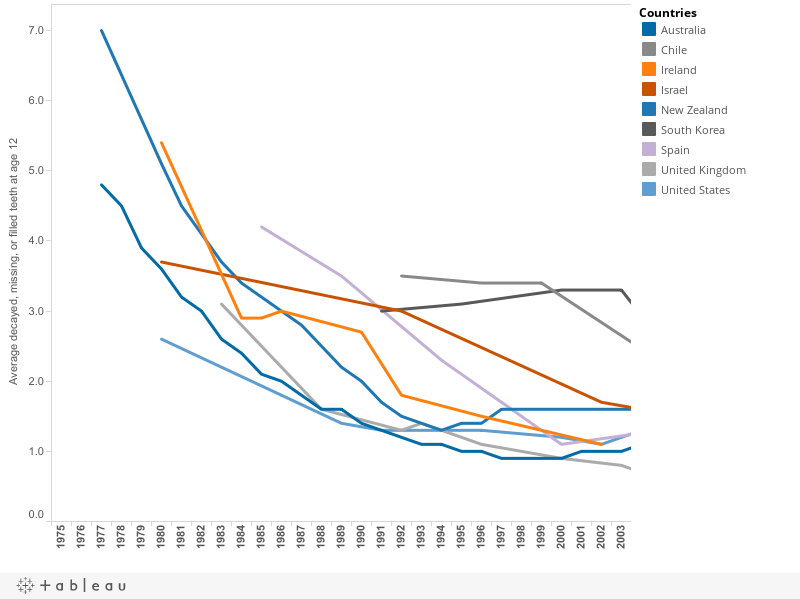Is Fluoridated Water Safe?
Since the mid-1940s, compounds containing the mineral fluoride have been added to community water supplies throughout the U.S. to prevent tooth decay. Health concerns expressed by opponents have largely been dismissed until recently. Now, evidence is mounting that in an era of fluoridated toothpastes and other consumer products that boost dental health, the potential risks from consuming fluoridated water may outweigh the benefits for some individuals. Last summer, for the first time in 53 years, the U.S. Public Health Service lowered its recommended levels of fluoride in drinking water.
The Evidence
Beginning in the early 20th century, scientists linked high levels of naturally occurring fluoride in certain community water supplies to low levels of tooth decay. In 1945, Grand Rapids, Michigan, became the first community in the world to add fluoride to tap water. When subsequent studies showed a significantly lower rate of cavities in schoolchildren, water fluoridation spread to other towns and cities. U.S. Centers for Disease Control and Prevention named community water fluoridation one of the 10 great public health achievements of the 20th century.
But many experts now question the scientific basis for the intervention. In June 2015, the Cochrane Collaboration—a global independent network of researchers and health care professionals known for rigorous scientific reviews of public health policies—published an analysis of 20 key studies on water fluoridation. They found that while water fluoridation is effective at reducing tooth decay among children, “no studies that aimed to determine the effectiveness of water fluoridation for preventing caries [cavities] in adults met the review’s inclusion criteria.” *
The Cochrane report also concluded that early scientific investigations on water fluoridation (most were conducted before 1975) were deeply flawed. “We had concerns about the methods used, or the reporting of the results, in … 97 percent of the studies,” the authors noted. One problem: The early studies didn’t take into account the subsequent widespread use of fluoride-containing toothpastes and other dental fluoride supplements, which also prevent cavities. This may explain why countries that do not fluoridate their water have also seen big drops in cavity rates (see chart).
Countries with fluoridated water
Source: OECD.Stat/Dental Health
Countries without fluoridated water
Source: OECD.Stat/Dental Health
Chart updated on June 15, 2016. An earlier version of this chart incorrectly listed Australia and Chile as having non-fluoridated water. The water in both countries is fluoridated.
Moreover, fluoride itself may be dangerous at high levels. Excessive fluoride causes fluorosis—changes in tooth enamel that range from barely noticeable white spots to staining and pitting. Fluoride can also become concentrated in bone—stimulating bone cell growth, altering the tissue’s structure, and weakening the skeleton.
Perhaps most worrisome is preliminary research in laboratory animals suggesting that high levels of fluoride may be toxic to brain and nerve cells. And human epidemiological studies have identified possible links to learning, memory, and cognition deficits, though most of these studies have focused on populations with fluoride exposures higher than those typically provided by U.S. water supplies.
The Bottom Line
Comments by Philippe Grandjean, adjunct professor of environmental health, Harvard T.H. Chan School of Public Health:
“We should recognize that fluoride has beneficial effects on dental development and protection against cavities. But do we need to add it to drinking water so it gets into the bloodstream and potentially into the brain? To answer this, we must establish three research priorities.
“First, since dental cavities have decreased in countries both with and without water fluoridation, we need to make sure we are dosing our water with the proper amount of fluoride for dental medicine purposes, but no more.
“Second, we need to make sure fluoridation doesn’t raise the risk of adverse health effects. In particular, we need basic research on animals that would help us understand the mechanisms by which fluoride may be toxic to the developing brain.
“Third, we need to find out if there are populations highly vulnerable to fluoride in drinking water—bottle-fed infants whose formula is made with tap water, for example, or patients undergoing dialysis. If these individuals are at risk, their water must come from a source that is lower in fluoride.”
*This description of the Cochrane Collaboration’s findings in relation to water fluoridation and adult cavities is a clarification of the text in the print edition of the Spring 2016 Harvard Public Health, where this article originally appeared.
Nicole Davis is a science writer and communications consultant specializing in biomedicine and biotechnology. She holds a Ph.D. in genetics from Harvard University.
Letters in response to “Is Fluoridated Drinking Water Safe?”
The article “Is Fluoridated Drinking Water Safe?” generated much response from the magazine’s readers. Below are letters we received that were critical of the story.



